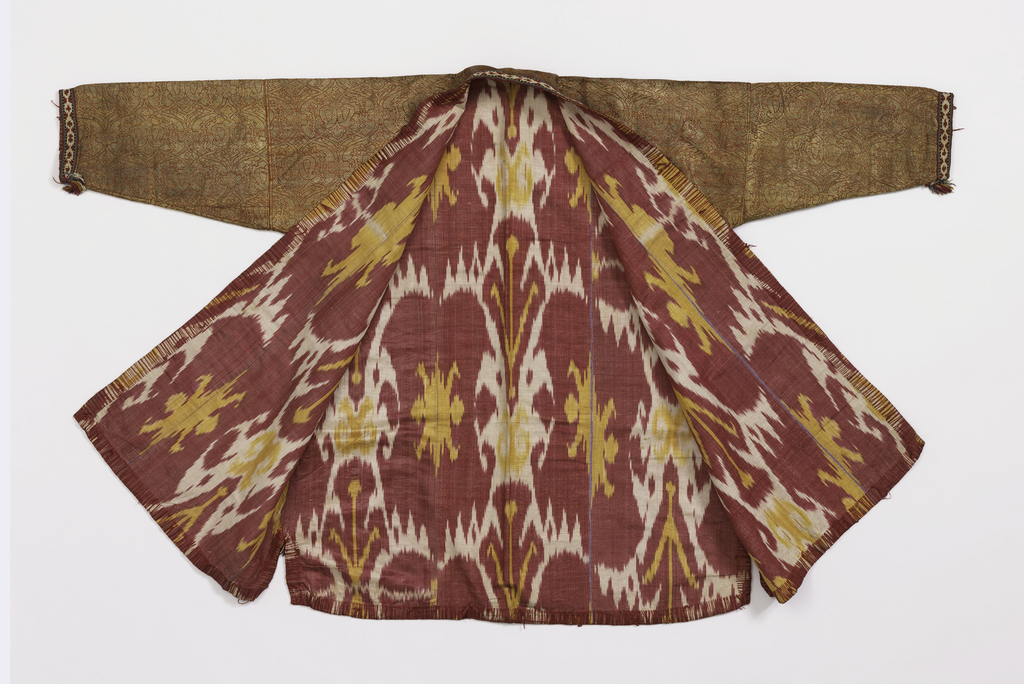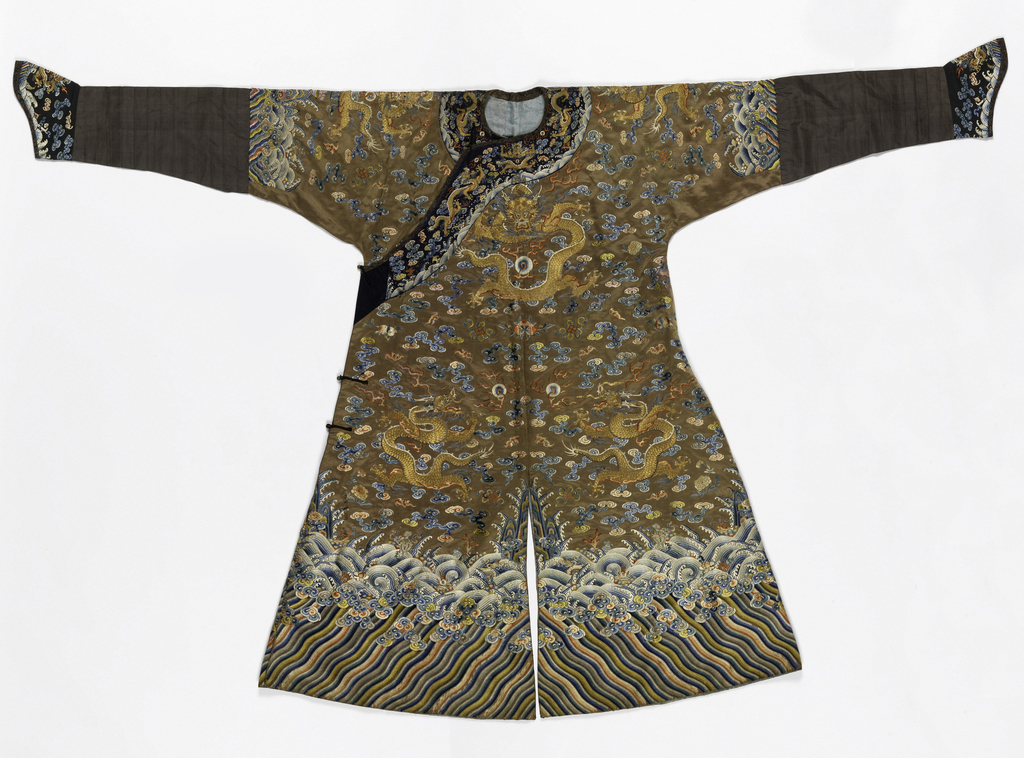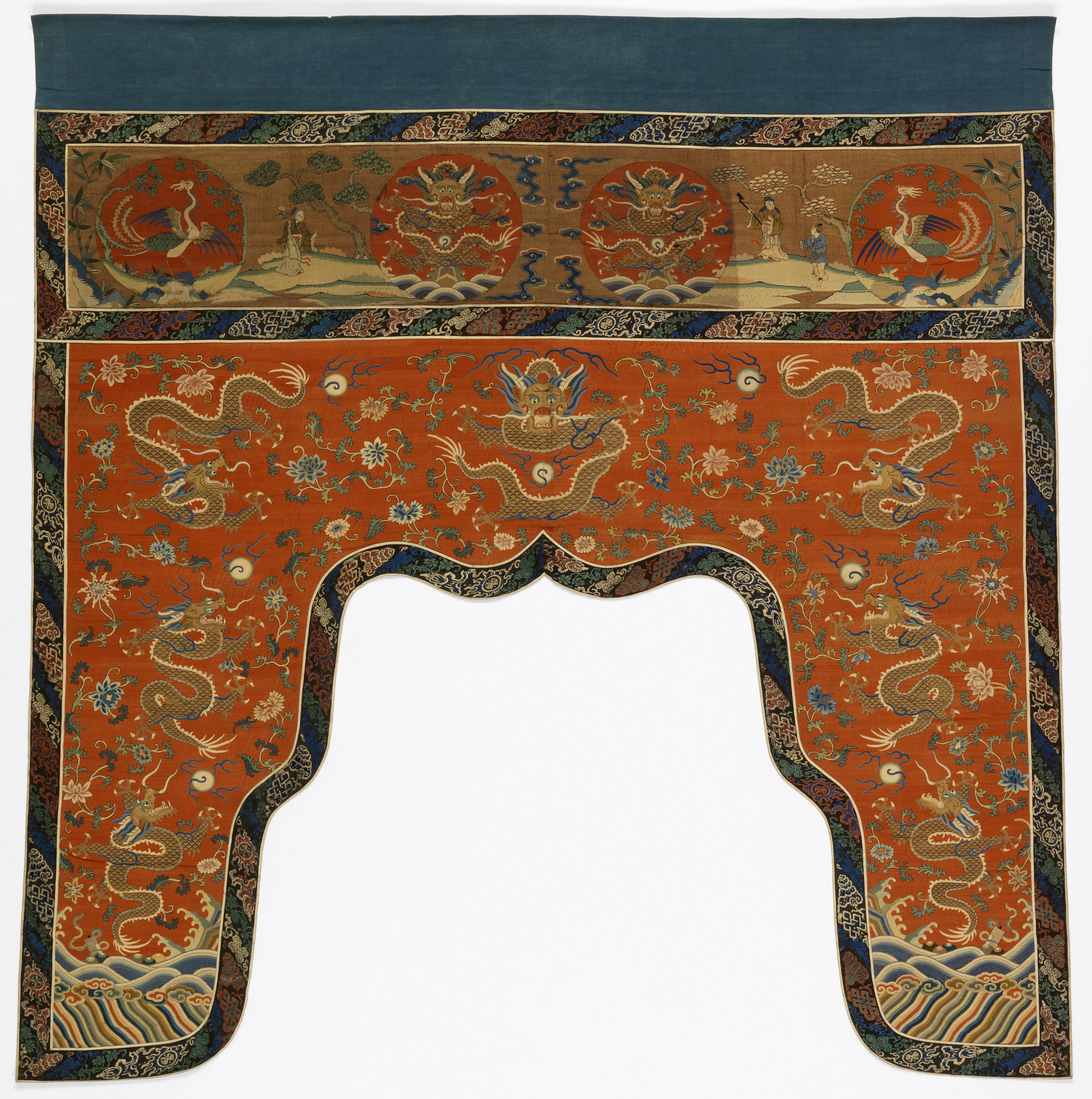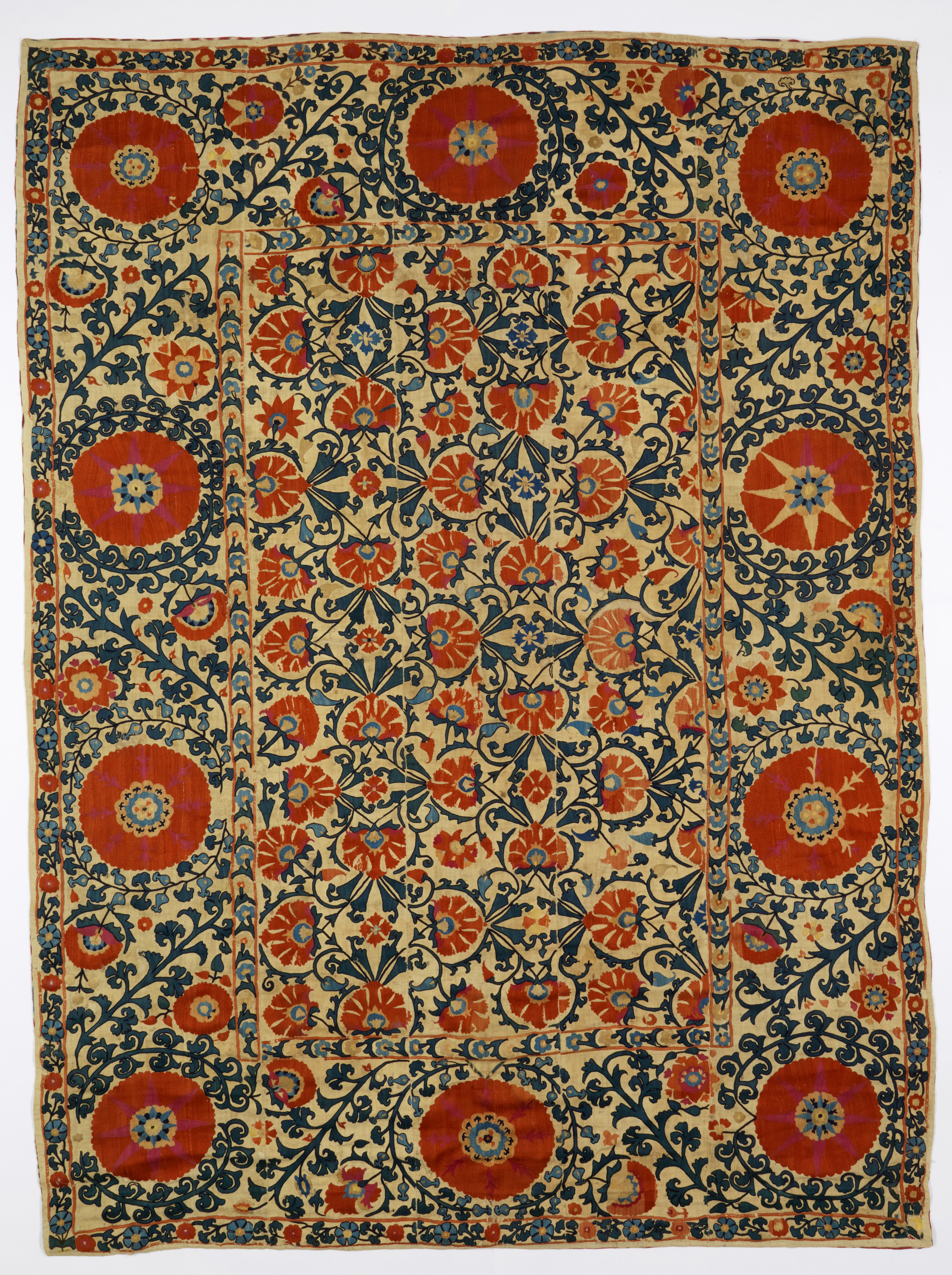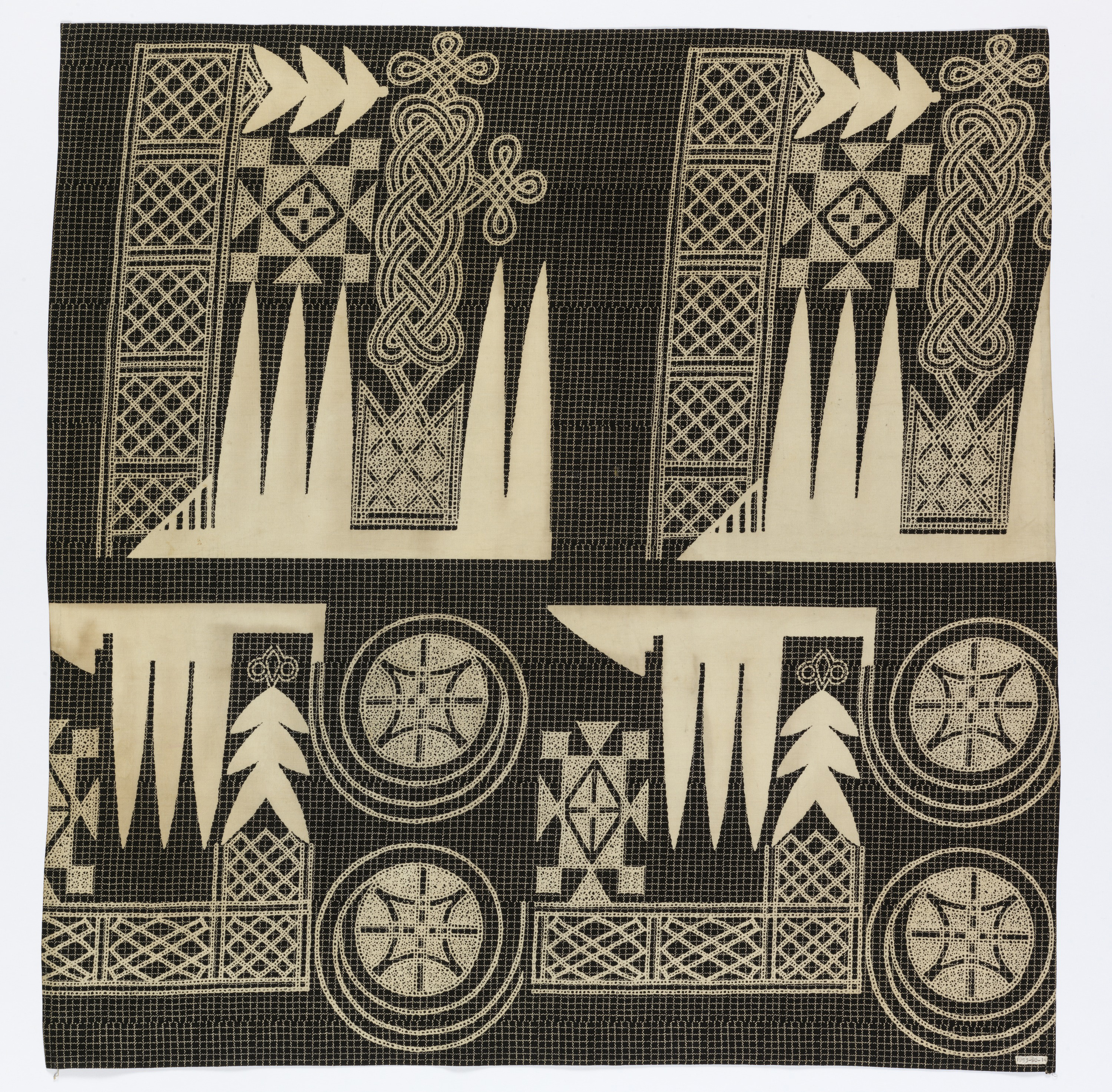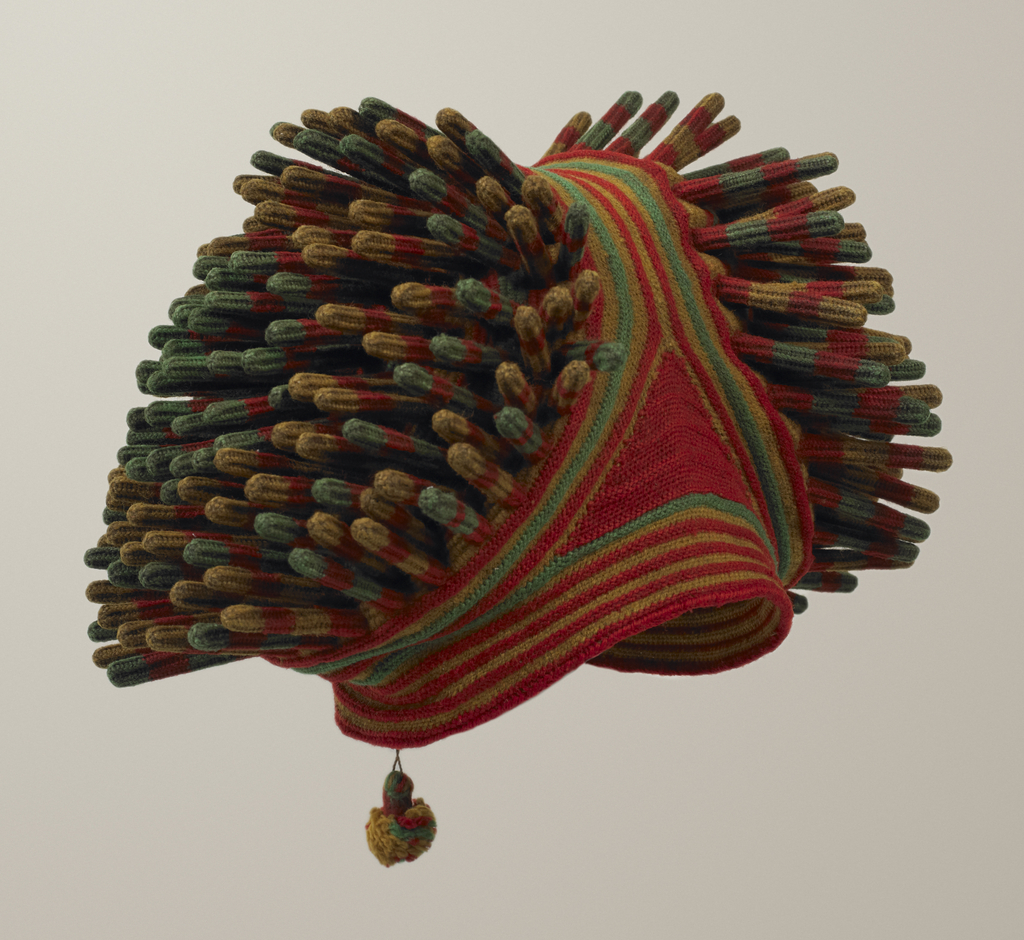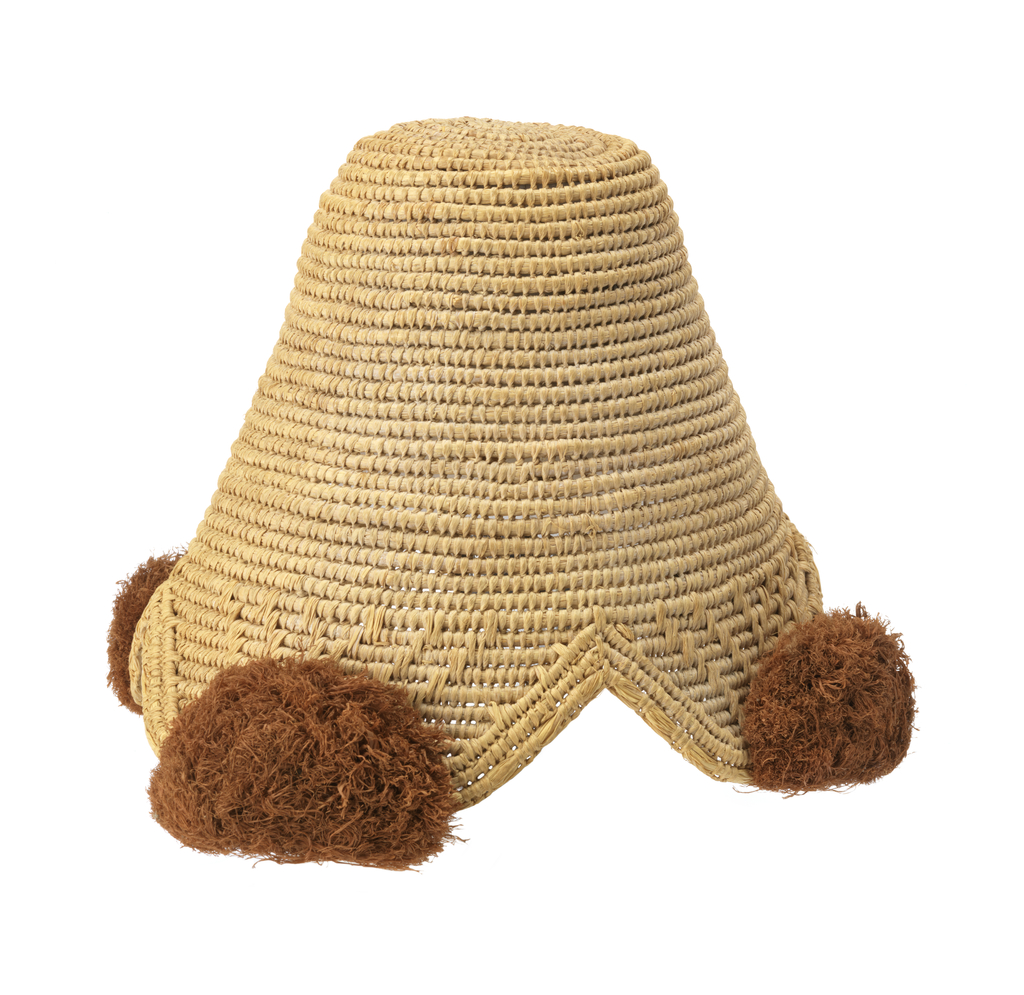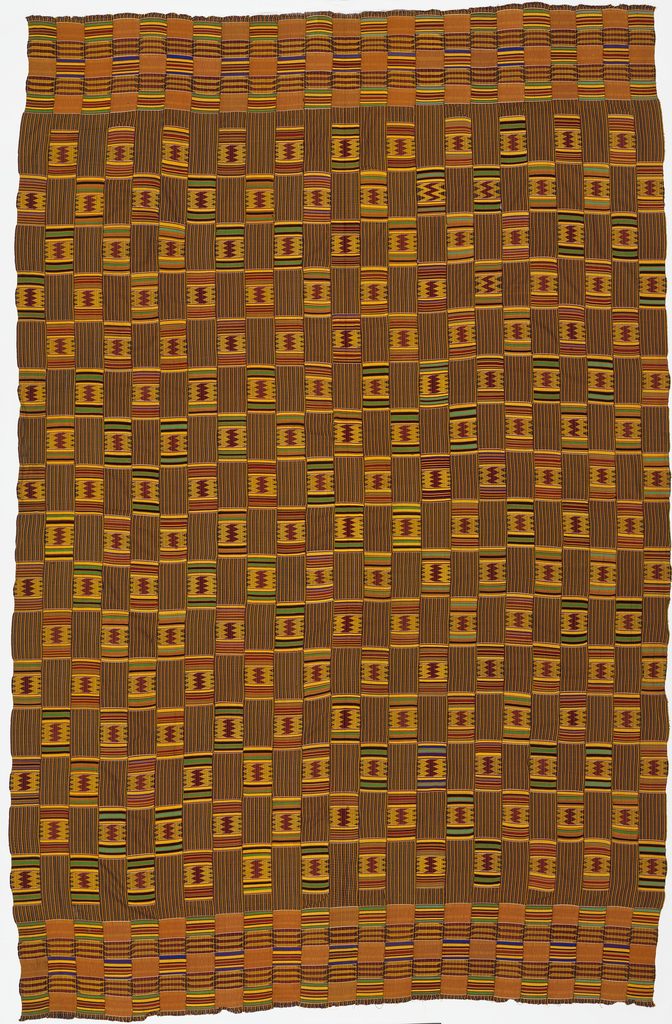Author: Sumru Belger Krody In celebration of the third annual New York Textile Month, members of the Textile Society of America will author Object of the Day for the month of September. A non-profit professional organization of scholars, educators, and artists in the field of textiles, TSA provides an international forum for the exchange and...
Dragon robes (ji fu吉服, lit. auspicious dress) originated in the Liao dynasty (907-1125), and were regulated as court dress under the Ming (1368-1644). The Qing dynasty (1644-1911) continued this usage, and standardized the nine-dragon design (the ninth dragon was positioned beneath the robe’s overlap). The dragon robe was worn with an ensemble of hat, surcoat,...
Table frontals were used on numerous types of Chinese tables: altar tables, dining tables, and magistrate’s desks. They covered the fronts, sides and legs of tables, and often coordinated with a set of matching chair covers. Such furnishings made furniture more flexible: the decoration could be adjusted for the season, the type of festivity, and...
Suzani, meaning “of needle” in Persian, are large-scale embroideries central to Central Asian domestic culture. Young girls learned to sew at an early age, often beginning to work on textiles intended for their own marriage dowries. Suzanis were considered the most important textiles in a dowry. Indicators of skill and family wealth, they were status...
This fabric, printed in Manchester, England for the African market, has a design which imitates the embroidered gowns worn by Hausa men in Nigera. The design of the embroideries is believed to have been influenced by men who learned the art of calligraphy from studying the Qur’an, and reflect an identification with Islam. They are...
The spiky projections on each side of the ashetu hat reflect the tufted hairstyles once worn by high-ranking men, frequently represented in sculpture. They can also be interpreted as physical manifestations of the inner head, considered to be the center of intelligence and spirituality. The ashetu hat is worn by the Fon or king, at...
If you think pompoms are whimsical, think again. This photograph, from the remarkable Eliot Elisofon Photographic Archives at the National Museum of African Art, shows titled soldiers known as iyol, who have earned the exclusive right to wear pompoms on their hats. [1] Elisofon, the famously colorful American photojournalist and filmmaker, traveled extensively around Africa...
Kente cloth is recognized around the world as a symbol of African identity and pride. But these colorful and majestic cloths were originally worn exclusively by members of the powerful ruling court of the Asante. A large community of artisans work in the village of Bonwire in the service of the royals to create the...
